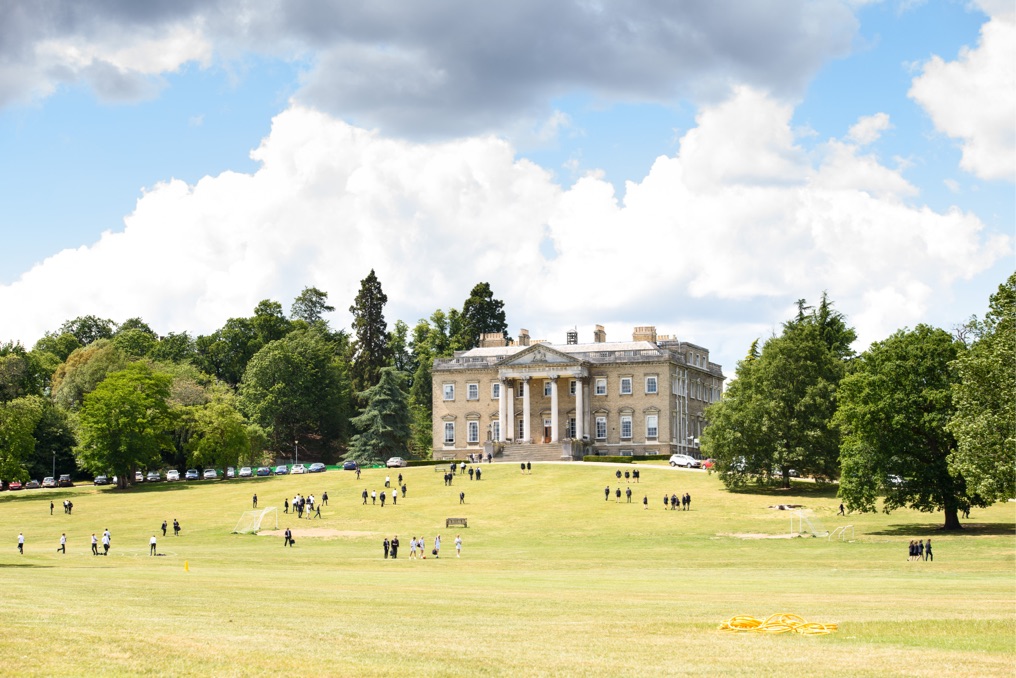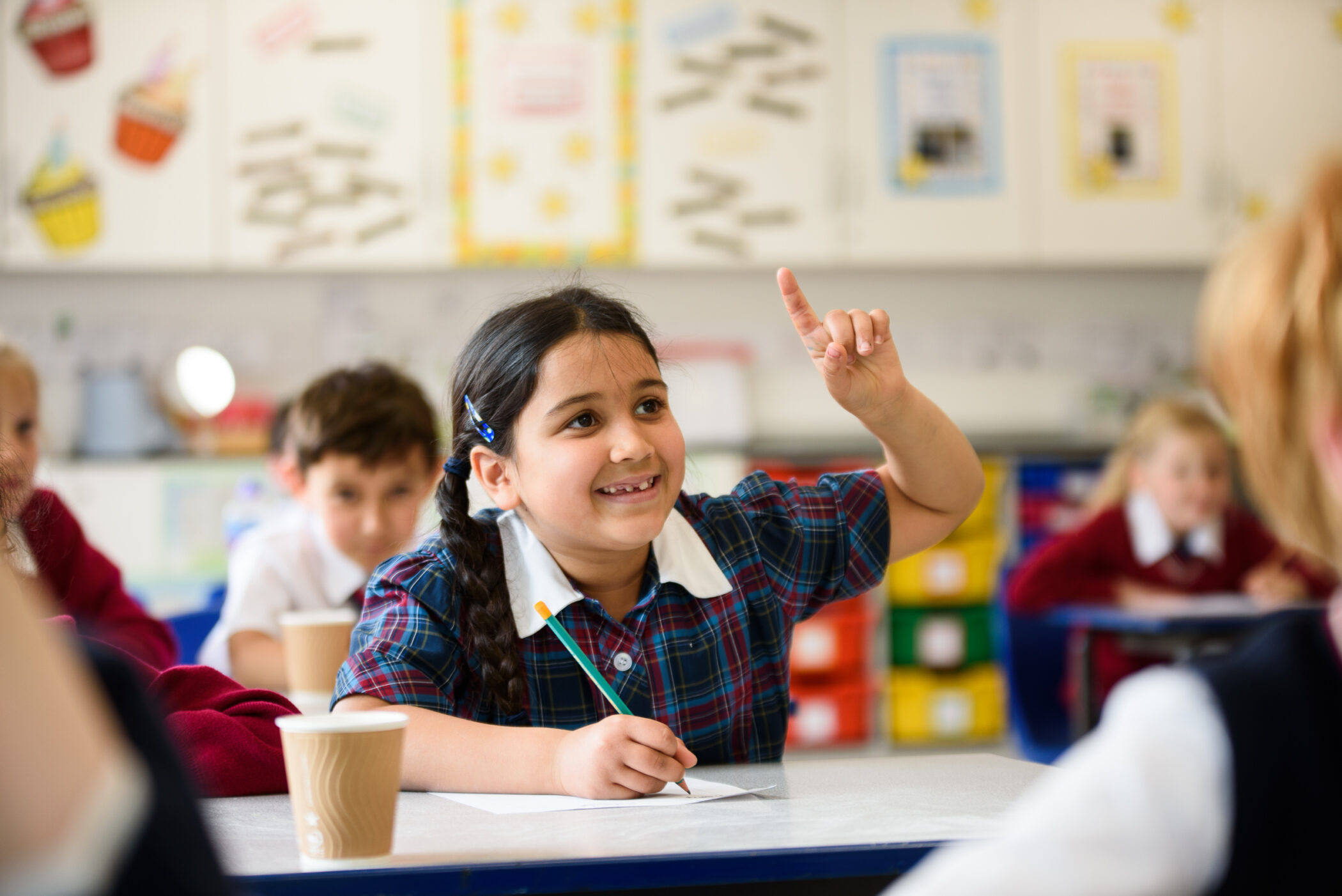Claremont Fan Court School
Longcross, Class of 2004
David Hogg
David was a pupil between 1989 and 2004. When in the school's workshop, he developed a life long interest in product design. Amongst other memorable stories, David recounts building a Mackintosh Lamp, taking photographs of the Mansion using his model aeroplane and designing fake 20p coins for the Sixth Form pool table:
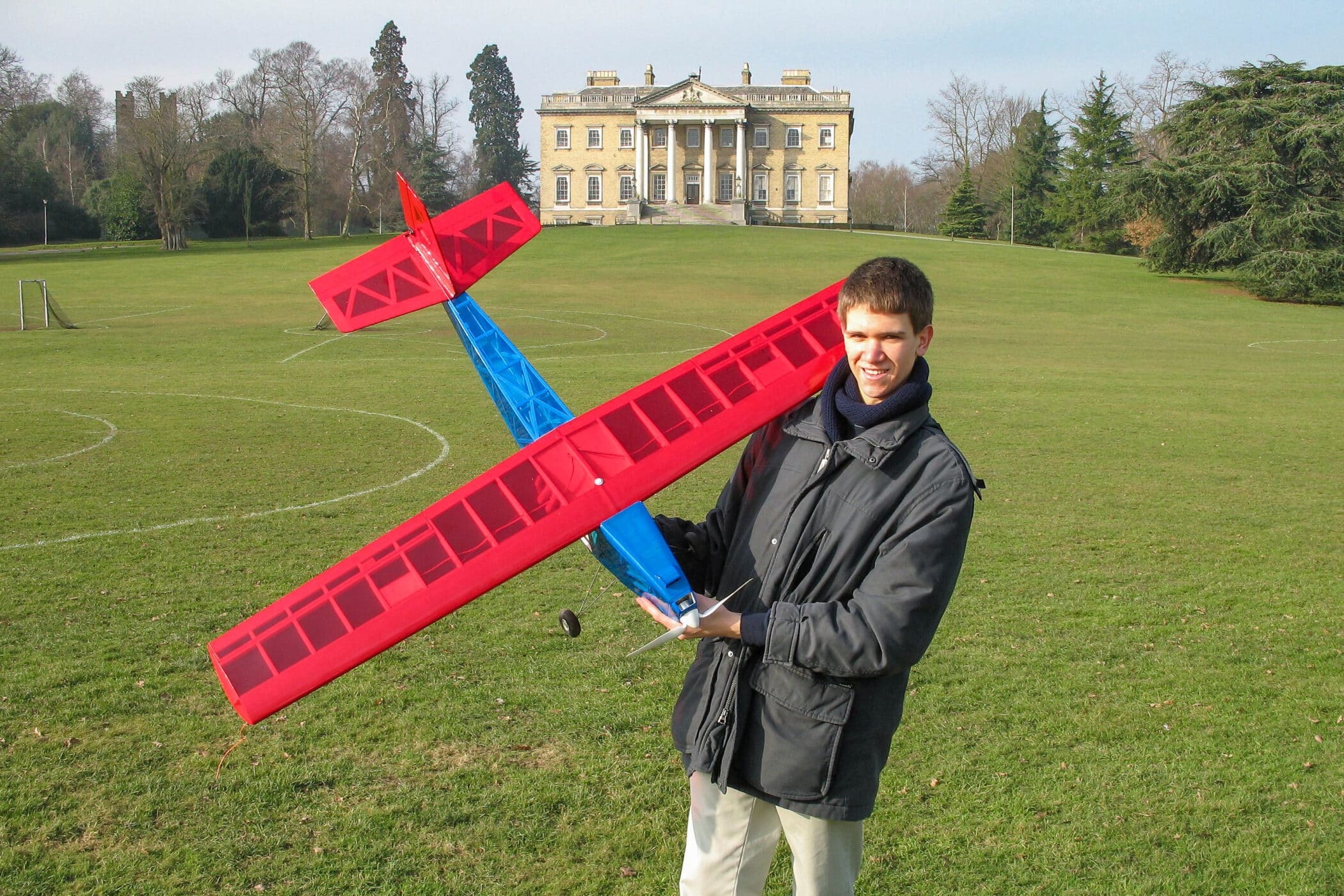
“Fond memories of the Claremont workshop
I have many fond memories of my experiences at Claremont, many of which formed the foundation for future hobbies and even my current career.
The Mackintosh lamp
Around 2003 when I was in Lower VI Form, I bought my first digital camera (a chunky Canon PowerShot A40 with an incredible resolution of 2 megapixels!) which was a revelation for me – being able to take photos and then immediately review them on a screen on the back of the camera (rather than having to wait weeks to finish a roll of film and then send it away to be developed!) opened up a whole new world of creative possibilities, and I very quickly became hooked on digital photography.
One of the first serious applications for my new camera (rather than just photographing family holidays, landscapes and flowers to improve my skills) was documenting my main Product Design AS-Level project in 2003, a lamp built in the style of Charles Rennie Mackintosh, the famous Scottish architect and designer. Under the watchful eye of my teacher Peter Kay-Kujawski, and the workshop technician Peter Fuller, I learned how to use the enormous Bantam metal lathe in the workshop to manufacture the 54 aluminium tubes required to join the 27 multi-coloured cubes of the lamp together.”
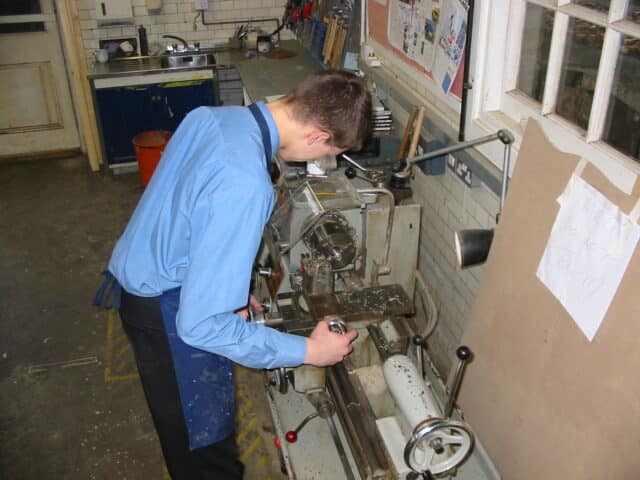
David working on the Bantam metal lathe in the workshop, 2003
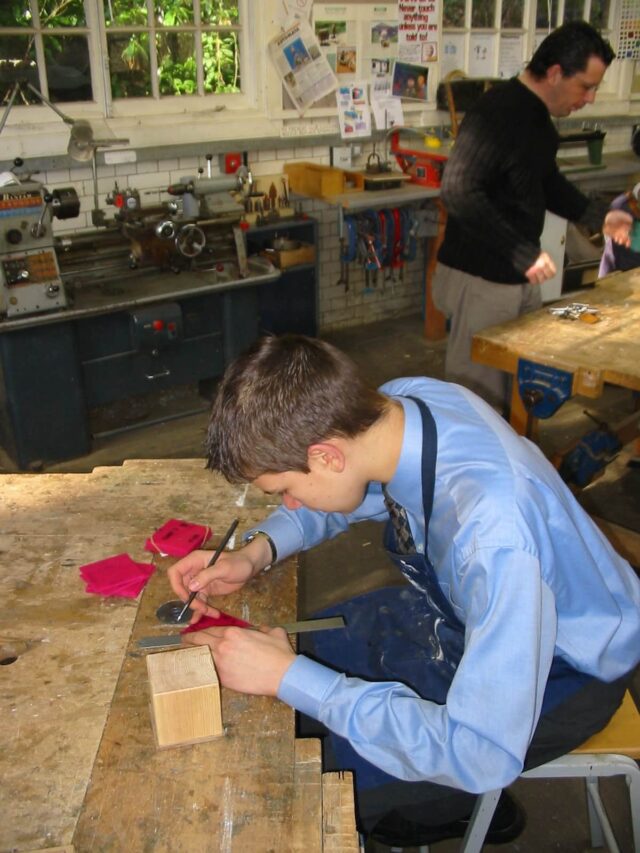
David marking holes to drill with Peter Kay-Kujawski in the background, 2003

Completed Mackintosh Lamp, 2003
“This lamp has moved with me from my home where I grew up, to my first rental house, and to all the subsequent homes I’ve lived in. Now with the old filament bulbs replaced with LEDs, this lamp gets turned on at least once a day when we watch TV, as it fits in perfectly with the decor of our living room and our TV which is back-lit by red LEDs! Every time I see it, I’m reminded of the fun I had making it in the Claremont workshop over 20 years ago.”

The Mackintosh lamp in David’s living room, 2024
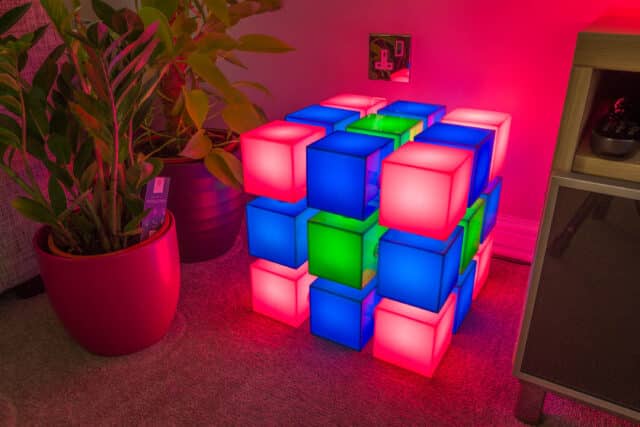
The Mackintosh lamp in David’s living room, 2024
“Mini IFO model aircraft motor
Learning how to use the lathe would prove extremely useful, as whilst studying for my A-Levels, I was also developing a passion for building and flying electric-powered model aircraft. Around this time, during the early 2000s, direct-drive ‘brushless’ electric motors were starting to become popular with radio-control model flyers, as they were a much quieter and more powerful alternative to the ‘brushed’ electric motors that preceded them, which usually required a gearbox in order to spin a large enough propeller to generate sufficient thrust – think of how having a ‘brushless motor’ is so often associated with being ‘better’ these days in everything from cordless drills to vacuum cleaners and lawnmowers. Kits of parts slowly became available that allowed you to ‘build your own’ brushless motor, but equally, you could build most of the parts for a brushless motor on a lathe if you knew what you were doing. Thanks to Peter Fuller’s guidance, together with advice from forums on the internet, this is exactly what I was able to do when I came back to Claremont during my summer holidays in 2005 (a year after leaving Claremont) to use the lathe again.”
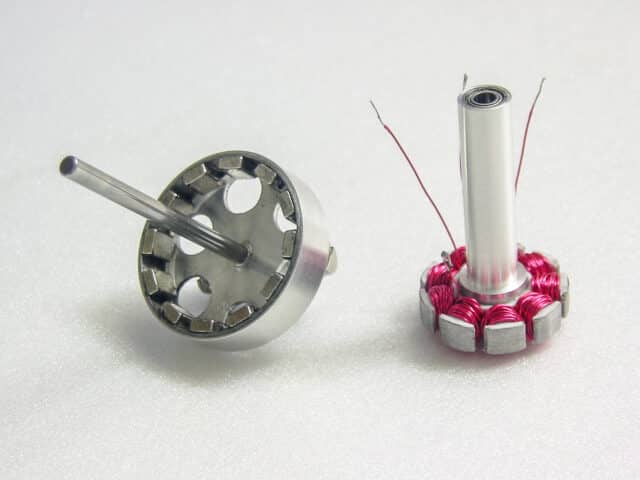
Mini IFO motor, 2005
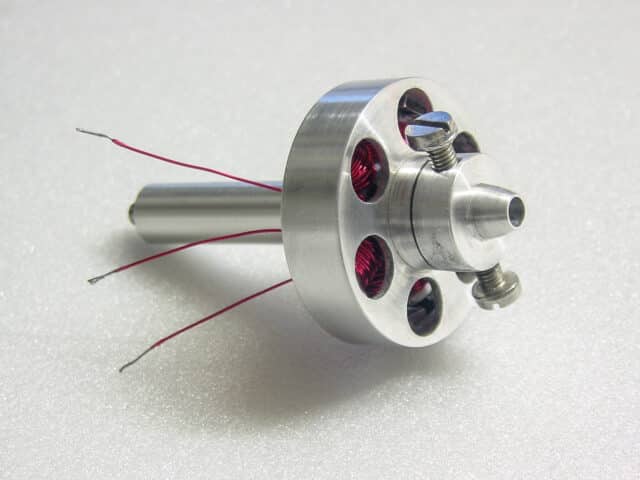
Mini IFO motor, 2005
“This exact motor is still working perfectly today, nearly 20 years later, on a model aircraft called a ‘Mini IFO’ or Indoor Flying Object! Pictured below is the original purple and green IFO that I built around 2005, and the new updated white, red and green IFO that I built in 2023 – both of which use the same brushless motor!”
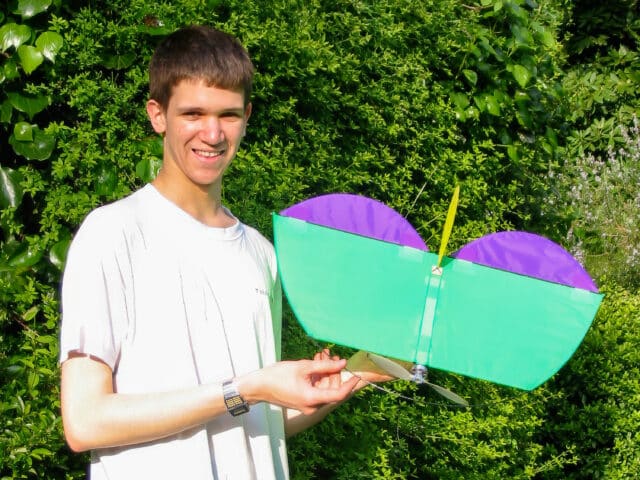
Original ‘Mini IFO’, 2005
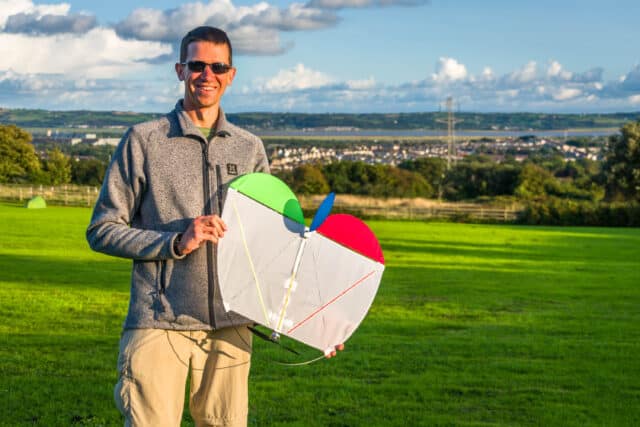
Modern reincarnation of the ‘Mini IFO’, using the same motor as the original, 2023
“Aerial photographs of the Mansion and the birth of Horizon Imaging
Possibly the most important and pivotal memory of my time at Claremont (albeit this was around 18 months after I had left), was when I came back to Claremont to test-fly my latest model aircraft in early 2006 – a 1.5 metre wingspan electric glider that I had designed to carry a digital camera, housed in a hollow cargo area under the aircraft’s wing. This aircraft used another, more powerful motor that I had built on the lathe in the Claremont workshop, and the Claremont Mansion was the first interesting photographic target I challenged myself to capture.”
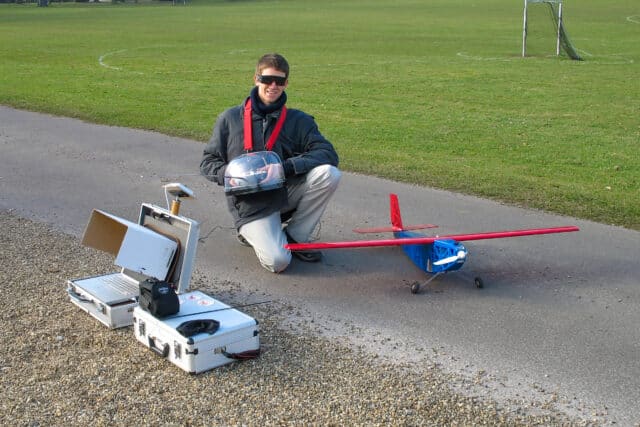
Me in front of CFC with his aerial photography plane, 2006
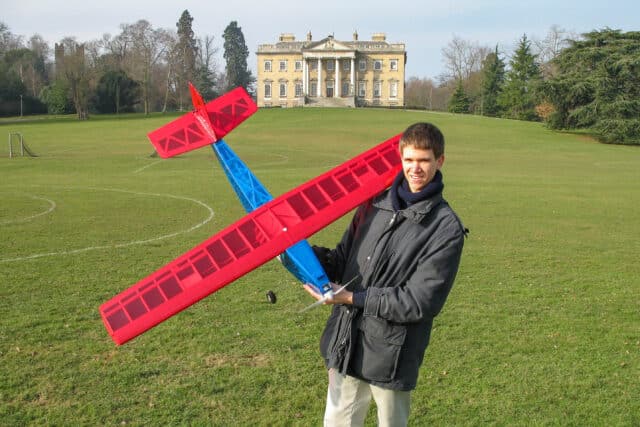
Me in front of CFC with his aerial photography plane, 2006
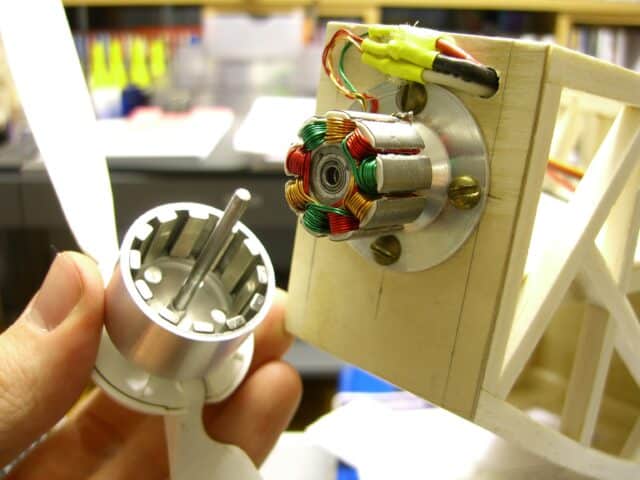
Close-up of aerial photography plane motor, 2005
“Using the lacrosse pitches as a makeshift runway, I flew the plane around the sports pitches for 20+ minutes at a time, using a rather grainy video feed from the camera on the aircraft to a laptop on the ground to try and compose some interesting photographs of the Mansion … just getting the building in shot was already a huge achievement as the plane would cruise at around 40mph!
Amidst several hundred photos of the sky or random parts of the Claremont grounds, a few aerial photographs really stood out, and I ended up selling copies of the two images below to the school in February 2006. The school used the images for many years in their marketing literature and greetings cards, as they provided a view of the Mansion and the grounds that no-one had ever seen before.”
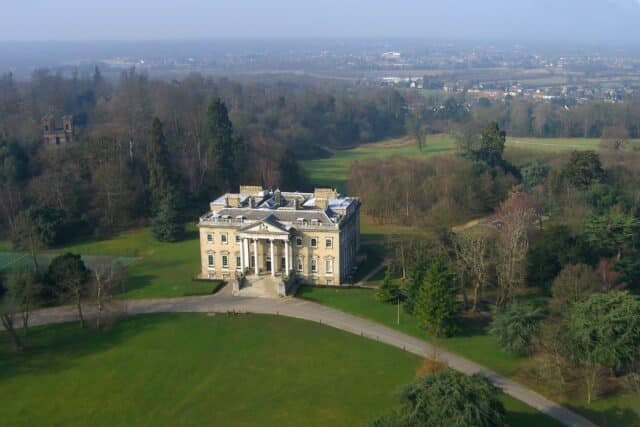
Aerial photograph of Mansion, 2006
“These photos lit a spark in my mind as to the potential of being able to take high quality aerial photographs from radio controlled model aircraft. Fast forward 12 years, and after completing a degree in Electronic Engineering at the University of Surrey, working for 5 years as an engineer, and designing and building numerous aerial photography platforms based on model helicopters (and what would later become known as ‘drone’ technology – the now ubiquitous model helicopters with 4 or more small propellers), I launched my own photography company called Horizon Imaging in April 2014, with support from the Government’s Start Up Loans scheme.
Now 10 years later, and with services that include drone photography and filming (using the latest DJI drones), architectural photography, Matterport virtual tours, promotional video production and time-lapse filming, I can’t see myself ever working for another company again! And all this was sparked by taking those first aerial photos of Claremont back in 2006, from a model aircraft powered by a motor built on the metal lathe in the Claremont workshop.
You can visit my website to see examples of my work here:
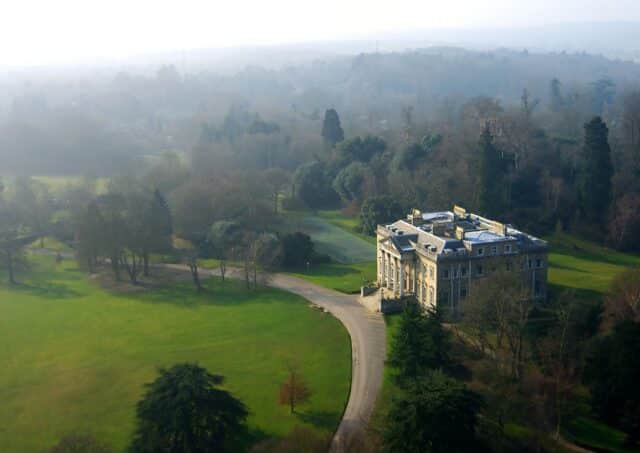
Aerial photograph of Mansion, 2006
“Some mischievous memories
A few slightly mischievous memories endure from my time at Claremont and I thought I’d share them below.
Cloned photocopier access card, 2001
As I’ve always been interested in engineering and how things work, when I was in Year 11, I was interested to see if I could replicate a photocopier access card required to use the photocopiers in the Mansion. These were simple plastic cards punched with two lines of holes, so one lunchtime when I saw a card lying on my form teacher’s desk (Shena Matchett – not sure of the spelling?), I traced through the punched holes onto a piece of paper, and then transferred the design onto a piece of cardboard when I got home. To my surprise, it worked! I don’t think I ever had a need to use the photocopier, so I don’t believe I ever actually used it, but I was still chuffed to have succeeded in fooling the photocopier with my duplicate card!
Fake 20p coins and the White Cottage pool table, 2003
Along similar lines, when I was in the Sixth Form, the pool table in the White Cottage was a social focal point for the 30 or so Sixth Form students, with many games being played each day. The table took 20p coins, and the engineer in me wondered if the table would also accept other 20p shaped objects … so I tried tracing around a 20p coin onto a sheet of aluminium and carefully cutting it out. To my surprise, this ‘fake’ 20p worked! However, my moral compass kicked in after using one or two of the fake 20p coins, so I never did it again! My apologies to the head of the Sixth Form at the time (Bob Longman I believe), who must have been a bit puzzled when he found the fake 20p lurking in the money box of the pool table!
Playing networked computer games, around 2002
The 2000s, when I was in Year 11 and the Sixth Form, were a time of rapid evolution in computers. They were becoming more powerful, and games in particular were becoming more engaging and realistic. One such game was Unreal Tournament, a ‘first person shooter’ game where you ran around futuristic landscapes shooting your opponents with a variety of exotic weapons. What took this game to a whole new level was the ‘multiplayer’ mode, allowing you to play against your friends in the same virtual environment by installing the game on multiple computers on the same network.
The ability to install games (or any other programs) obviously wasn’t possible with the basic student accounts we were given for logging into the school computers … but fortunately, computers were still so new at the time that little thought had been given to security, or specifically password strength … and a fellow pupil soon worked out that all the teacher’s usernames and passwords comprised the initial of the teacher’s forename followed by their surname (eg. dhogg)! Teacher accounts had administrator-level access to all the school’s computers and allowed games like Unreal Tournament to be installed and played across the school network, much to the enjoyment of my friends and I! Because computers were still so new, it took a while for the staff to realise that we probably weren’t allowed to play networked games so a few weeks later it was stopped!”
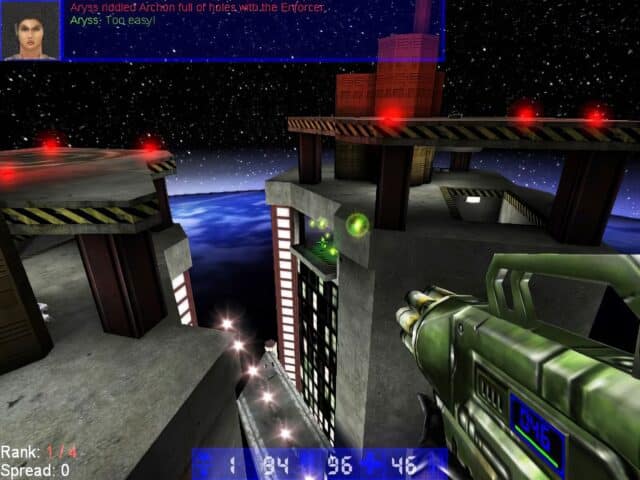
Unreal Tournament computer game
